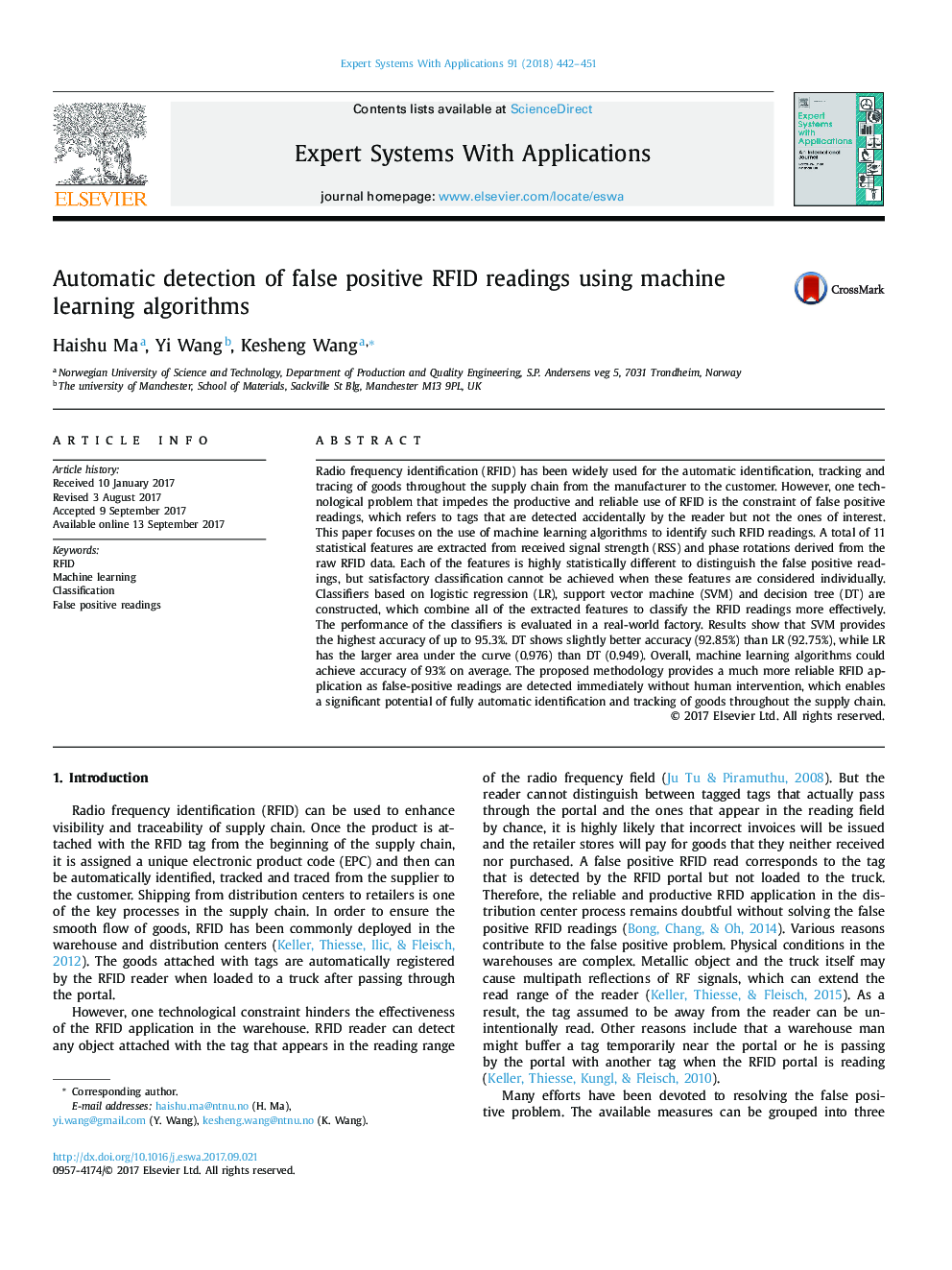| کد مقاله | کد نشریه | سال انتشار | مقاله انگلیسی | نسخه تمام متن |
|---|---|---|---|---|
| 4942946 | 1437615 | 2018 | 10 صفحه PDF | دانلود رایگان |
- This paper presents a classification method for detection of false positive RFID readings.
- We collect RFID data from a joint factory built by NTNU and SPU.
- We extract received signal strength (RSS) and phase rotations derived from the raw RFID data.
- Experimental results demonstrate our proposed method achieves satisfactory accuracy.
Radio frequency identification (RFID) has been widely used for the automatic identification, tracking and tracing of goods throughout the supply chain from the manufacturer to the customer. However, one technological problem that impedes the productive and reliable use of RFID is the constraint of false positive readings, which refers to tags that are detected accidentally by the reader but not the ones of interest. This paper focuses on the use of machine learning algorithms to identify such RFID readings. A total of 11 statistical features are extracted from received signal strength (RSS) and phase rotations derived from the raw RFID data. Each of the features is highly statistically different to distinguish the false positive readings, but satisfactory classification cannot be achieved when these features are considered individually. Classifiers based on logistic regression (LR), support vector machine (SVM) and decision tree (DT) are constructed, which combine all of the extracted features to classify the RFID readings more effectively. The performance of the classifiers is evaluated in a real-world factory. Results show that SVM provides the highest accuracy of up to 95.3%. DT shows slightly better accuracy (92.85%) than LR (92.75%), while LR has the larger area under the curve (0.976) than DT (0.949). Overall, machine learning algorithms could achieve accuracy of 93% on average. The proposed methodology provides a much more reliable RFID application as false-positive readings are detected immediately without human intervention, which enables a significant potential of fully automatic identification and tracking of goods throughout the supply chain.
Journal: Expert Systems with Applications - Volume 91, January 2018, Pages 442-451
